CranioSacral Therapy
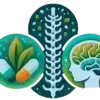
Cranial-Sacral Therapy is the most advanced and sophisticated osteopathic method, yet it is also the gentlest. Manual osteopaths must go through extensive training to master this method. This training makes their hands highly responsive to cranial motion and enables them to apply cranial procedures with pinpoint accuracy.
Osteopaths evaluate and treat mobility issues in the skull and its contents using this mild manual method. The spine, sacrum, and other areas of the body may be evaluated and treated using this tool. The purpose of this method is to normalise blood flow and other bodily fluids in order to improve overall health.
It focuses on the movement and circulation of the blood, cerebrospinal fluid, and other body fluids around the head, spine and sacrum area. This therapy helps to relieve pain, improve physical performance, reduce stress levels, help to restore balance in the body’s cranial-sacral system and improve its functioning by increasing mobility in the joints. This therapy also helps to improve posture, concentration and mental clarity.
Osteopaths that use manual techniques focus on the body’s natural biorhythm to achieve this goal. They may sense this pulse throughout the patient’s brain, spine, sacrum, and every other part of their body. Manual osteopathic practitioners at Naturopath Osteopath Clinic analyse the biorhythm of their patients and may make adjustments to it based on their findings. Cranial-Sacral Therapy can be used on people of all ages who are dealing with acute or chronic health issues such as headaches, neck pain or jaw dysfunction.
What is CranioSacral Therapy?
CranioSacral Therapy (CST) was pioneered and developed by osteopathic physician John E. Upledger following extensive scientific studies from 1975 to 1983 at Michigan State University, where he served as a clinical researcher and Professor of Biomechanics.
CranioSacral Therapy (CST) is a hands-on therapy, where the touch is gentle, non-invasive and usually subtle. It is a powerful therapy that affects and assists in improving the functions of the whole body.
Using ‘listening hands’ tuned to the feeling of the craniosacral rhythm, feeling how well the rhythm is reflecting out to the rest of the body and what may be able to do to improve its functioning.
The practitioner senses tensions in the body and helps to release them in a supported and comfortable way. During or after a session with our Osteopath in Naturopath Osteopath Clinic, you may feel calm and energized, with increased clarity of mind and a feeling of overall well-being.
Patients find CranioSacral Therapy effective for a wide range of problems associated with discomfort, pain, and dysfunction. Interestingly, this approach also appears to complement and stimulate the body’s natural healing processes, therefore CST is increasingly used as a preventive health measure.

Who is it for?
People may come for CranioSacral Therapy because they have an acute physical problem like a headache, back pain, long-standing problems both physical and emotional. Others come for ongoing support in their busy lives and for help to meet life’s challenges.
Because it is so gentle and non-invasive, CranioSacral Therapy is suitable for everyone from newborns to the elderly. Mothers and babies often come for problems associated with difficult or traumatic births. Letting go of tension and fear held in the body enables both to settle into calmness.
CranioSacral Therapy supports your body’s innate ability to balance, restore and heal itself, as well as helping to reduce stress and build your underlying energy.
CranioSacral Therapy (CST) is used to bolster resistance to disease, and is effective for a wide range of medical problems associated with pain and dysfunction such as
- Migraine Headaches Relief
- Chronic Neck and Back Pain
- Motor-Coordination Impairments
- Colic
- Autism
- Central Nervous System Disorders
- Orthopedic Problems
- Concussions and Traumatic Brain Injuries
- Alzheimer’s Disease and Dementia
- Spinal Cord Injuries
- Scoliosis
- Infantile Disorders
- Learning Disabilities
- Chronic Fatigue
- Emotional Difficulties
- Stress and Tension-Related Problems
- Fibromyalgia and other Connective-Tissue Disorders
- Temporomandibular Joint Syndrome (TMJ)
- Neurovascular or Immune Disorders
- Post-Traumatic Stress Disorder
- Post-Surgical Dysfunction
During a session
Our Osteopath will take a written case history, listening with care to the reasons for your visit. This part of the session is important, both for gathering information and to establish a good understanding with your practitioner. The session typically lasts an hour, although this can vary. You remain clothed and will usually lie face up or on your side. The practitioner makes light contact with your head, the base of your spine, and other areas, encouraging your body to relax and begin to make the changes it needs. Because the body functions as a whole, your practitioner may focus on areas other than where your symptoms occur.
After the session
There is occasionally a short period of adjustment as part of the healing process, where you may become more aware of symptoms. Sometimes people report relief after only one or two sessions.
For long-standing problems, further sessions may be needed. Some people find they benefit from regular treatment over an extended period of time. Some patients have reported that in addition to noticing the improvement in their physical or emotional symptoms, they also feel that they have more awareness of their own needs and strengths and their quality of life has improved.
CranioSacral Therapy is not intended as primary healthcare but to work alongside the relationship you have with your doctor.
Naturopath Osteopath Clinic Manual Osteopathic Services

Osteopathic Pain Management
Osteopathic pain management is a field of medicine that uses manual therapies and other treatments to help people manage pain. Osteopathic pain management is often used to treat chronic pain, but can also be used to treat acute pain.
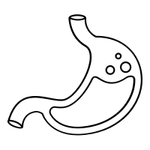
Osteopathic Systemic Dysfunction and Problems
Osteopathic systemic dysfunction (OSD) is a term used to describe a state of body function that is characterized by a disruption in the normal balance of the musculoskeletal, cardiovascular, respiratory, and digestive systems.
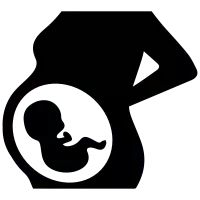
Pregnancy
Osteopathy for Pregnancy is a form of treatment that focuses on the body’s structure and how it functions. Osteopaths believe that restrictions in movement or pain in one area of the body can cause problems in other parts of the body.
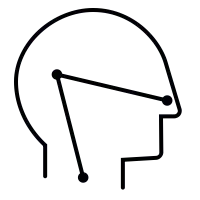
Ear, Nose and Throat Problems
Osteopathy is a form of manual medicine that uses specific techniques to diagnose and treat problems with the musculoskeletal system. Osteopaths believe that many health problems can be traced back to problems with the bones, muscles, and joints.
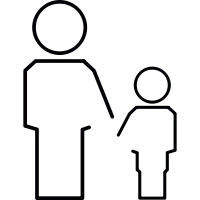
Pediatric Osteopathy (Babies and Children)
Pediatric Osteopathy is a form of holistic medicine that uses manual manipulation of the body to improve circulation and overall health. Osteopaths believe that this type of treatment can help with a wide range of issues, from ear infections to colic.
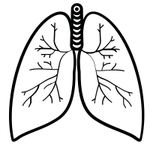
Respiratory Illness
Osteopathy is a form of manual medicine that uses the hands to diagnose and treat health problems. Osteopathy can be used to treat a wide variety of respiratory illnesses, including asthma, bronchitis, and pneumonia.
If you liked this content and found it to be informative, please rate it.
We are sorry that this post was not useful for you!
Let us improve this post!
Tell us how we can improve this post?
